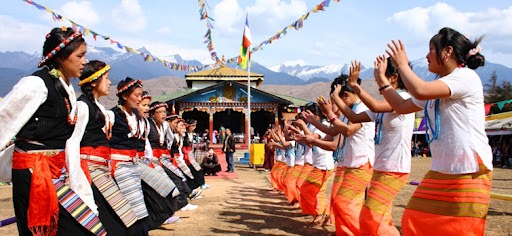
On February 19, 1987, Mizoram and Arunachal Pradesh officially became full-fledged states of India, marking the culmination of decades of political struggle, insurgency, and negotiations. Their journey to statehood was shaped by historical injustices, regional identity movements, and the relentless efforts of national and local leaders.
The Mizoram Struggle: From Rebellion to Peace
Mizoram’s statehood was deeply rooted in long-standing discontent that had been building since Independence. Initially part of Assam, the people of Mizoram felt alienated as their unique identity was often overlooked. The Mautam famine of 1959, caused by the cyclical flowering of bamboo, led to severe food shortages. The delayed response of the government fueled resentment, giving rise to the Mizo National Front (MNF) in 1961, led by Laldenga, a former Indian Army clerk.
As demands for independence grew, the MNF took up arms against the Indian state. In 1966, the Indian government, under Prime Minister Indira Gandhi, launched a military operation to suppress the rebellion. This included the bombing of Aizawl by the Indian Air Force, the only instance in India’s history where its own citizens were bombed. The conflict escalated, pushing the region into prolonged violence.
Realizing that military force alone could not resolve the crisis, backchannel talks were initiated in the late 1970s. Under Rajiv Gandhi’s leadership, negotiations intensified, leading to the historic Mizo Accord in 1986. The MNF agreed to renounce violence, paving the way for Mizoram’s full statehood in 1987, with Laldenga becoming the state’s first Chief Minister.
Arunachal Pradesh: The Strategic Frontier’s Journey to Statehood
Unlike Mizoram, Arunachal Pradesh’s struggle was less about armed rebellion and more about political recognition. Post-Independence, it remained under central administration as the North-East Frontier Agency (NEFA) due to its strategic border with China. However, the 1962 Indo-China War exposed India’s lack of preparedness in the Northeast, prompting the government to strengthen its hold over the region.
Under Indira Gandhi’s leadership in 1972, NEFA was renamed Arunachal Pradesh and granted Union Territory status, providing limited self-governance. Over the next decade, local leaders like Prem Khandu Thungan advocated for full statehood, arguing that direct central rule stifled development and representation.
By the mid-1980s, the demand for greater autonomy gained momentum. In 1987, under Rajiv Gandhi, Arunachal Pradesh was finally granted full statehood, ensuring political empowerment and improved governance for the region.
The Impact of Statehood: A New Dawn for Mizoram and Arunachal Pradesh
The journey to statehood was long and challenging, but it ushered in an era of stability and development. Mizoram, once a conflict-ridden region, transformed into one of India’s most peaceful and literate states, proving that dialogue and political accommodation could resolve even the most complex insurgencies. Arunachal Pradesh, once an isolated frontier, saw rapid improvements in infrastructure, education, and economic development, strengthening India’s presence in the Northeast.
Today, both states stand as examples of how integration and self-governance can uplift regions, turning struggles into success stories. The legacy of leaders like Indira Gandhi, Rajiv Gandhi, and Laldenga, along with countless local figures, remains deeply embedded in their histories.
On this day, India celebrates not just the granting of statehood but the triumph of peace, democracy, and regional empowerment in its Northeast.




